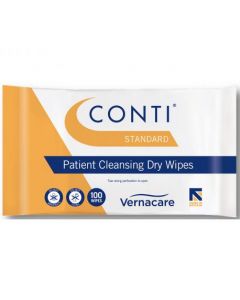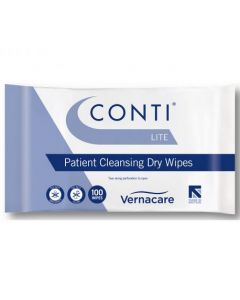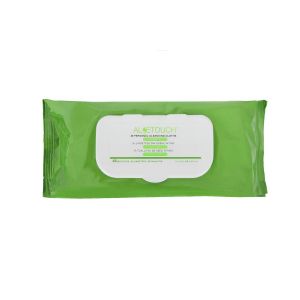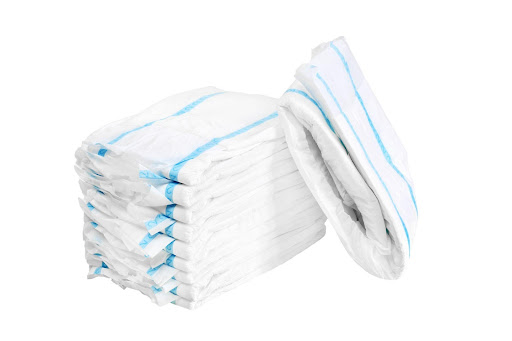Ensuring the personal hygiene of residents is one of the most important tasks that care home staff must undertake. Proper cleansing reduces the risk of infection, improves the overall health of the resident and helps to keep them happier through the increased sense of pride and dignity.
Wet and dry wipes are among the most commonly incontinence products used when washing patients. A well made wipe helps to safely and thoroughly clean the resident in a non-abrasive and comfortable way.
As with many healthcare products, there are a wide range of wet and dry wipes available. So this article, created by healthcare marketplace Wippet, helps you to identify:
- The difference between wet and dry wipes
- How and when to use wet wipes and dry wipes
- Whether to use disposable or reusable wipes
What is the difference between wet and dry wipes?
Wet and dry wipes are cleaning products that are commonly used in healthcare settings such as hospitals, nurseries, and nursing homes, as well as other areas where hygiene standards must be met.
Varying varieties of dry wipes have different features, but they all have the same characteristics: they are robust, soft, and absorbent. This implies they may be used for a variety of tasks such as drying, wiping surfaces, cleaning patients, and more.
Wet wipes
Wet wipes are made from a similar polyethene material to dry wipes, but they come pre-saturated with a cleaning solution. This makes wet wipes ideal for carers to carry in their pockets, where carrying a bottle of cleaning solution around wouldn’t be practical.
Wippet offers a smaller range of flushable wet wipes in several sizes, from small to medium. These wet wipes use a dermatologically tested, pH balanced, lanolin and alcohol-free formulation specifically designed to provide immediate and long-lasting moisturisation.
Dry wipes
Dry wipes are a type of polyethylene wipe created without the addition of a cleaning solution. This means they can be used dry in tasks that require an absorbing wipe, or saturated in a cleaning chemical in tasks that require a cleansing.
Wippet offers a wide selection of dry wipes, including those that are flushable, designed for incontinence care or made to be soft for sensitive skin, and many are available in size ranging from small to extra large.
How and when to use wet and dry wipes
Dry wipes
Dry wipes are multifunctional tools for keeping a hygienic, healthy environment because they are not pre-saturated with cleaning solution. In addition, dry wipes are often preferred by some users for their lack of chemicals, making them more suitable for those with sensitive skin.
They can be used dry to absorb fluids on surfaces, mop up spills and clean hard surfaces, or made wet and used with soap and water or a cleansing solution to wash a patient or surface thoroughly. In this sense, they essentially replace a J-cloth or flannel.
In care homes, dry wipes are commonly used with cleansing solutions to bathe residents in bed or clean those who get soiled due to incontinence. Their single-use nature for such tasks where the risk of bacteria is great means cross-contamination between patients and surfaces is more easily avoided.
According to recent studies based on NHS data, over 630 million dry wipes are used annually, and products are chosen based on clinical criteria such as durability and performance. The need for such high quality is why the NHS has been using the Conti range of dry wipes for over 35 years.
Wet wipes
Wet wipes contain the same cleansing and moisturising benefits as dry wipes but are more suitable for people with sensitive skin and on all body parts, including the face. They tend to be larger, softer cloths than dry wipes that are great for cleaning patients and residents who are less mobile or bedridden.
Wet wipes are commonly used as a substitute for soap and water when cleaning, especially when running water is unavailable. They have a moisturising composition that deodorises skin while also battling bacteria to aid in infection control, making them suitable for people of all ages.
In care homes, wet wipes have similar uses to dry wipes in bathing and caring for patients with incontinence. Although care should be taken to use unscented wipes if the person you’re caring for has sensitive skin.
Recent research has found a correlation between traditional soap and water handwashing and Healthcare-Associated Infections (HCAIs) in catheter management, and that replacing washbasins with one-time use bathing products, including pre-packaged wet wipes, lowered infection rates by more than 59%.
Should you use disposable or reusable wipes?
Reusable towels were once commonly seen on hospital wards and in other healthcare settings. After each usage, these dry cloths would be cleaned within the industrial laundering of a hospital or care home to eliminate infectious substances and prevent the risk of infection.
However, new research has revealed that these reusable cloths might be responsible for spreading infection and causing harm. According to one study, reusable cloths may be easily come into contact with infectious surfaces after washing but before packing and go on to contaminate other surfaces and patients.
Other research has shown that healthcare wash processes are insufficient to remove pollutants and that cotton towels should not be used in healthcare settings because they impair the efficiency of disinfectant cleaning agents.
Therefore many care homes and hospitals have switched to using disposable wet and dry wipes to ensure the highest possible level of infection prevention and control.

Should all care homes provide wipes for personal care?
There is no legal requirement for care homes to provide their residents wipes for personal care. However, giving residents easy access to wipes can greatly increase their overall health and happiness because they have more autonomy over their personal hygiene.
Are wipes standard for personal care in care homes?
Dry wipes are the most common tool for personal care in care homes because of their flexibility. When used dry, dry wipes allow carers to mop up spillages and clean surfaces. When used wet with a cleansing solution, dry wipes become a kind of disposable flannel for excellent infection control.
Do you have to use alcohol wipes in care homes?
Most care homes use a mix of alcohol and non-alcohol wipes in care homes for different tasks. Alcohol wipes are used where the risk of infection is great due to the presence of bacteria, viruses or fungi. Non-alcohol wipes are used where the risk is less or the resident has sensitive skin.
Where can I purchase wet and dry wipes?
At Wippet, we offer a huge range of wet and dry wipes for care homes to ensure carers can provide the highest level of personal hygiene for their residents.
Shop Wippet’s wide range of wet and dry wipes wholesale for care homes here.






